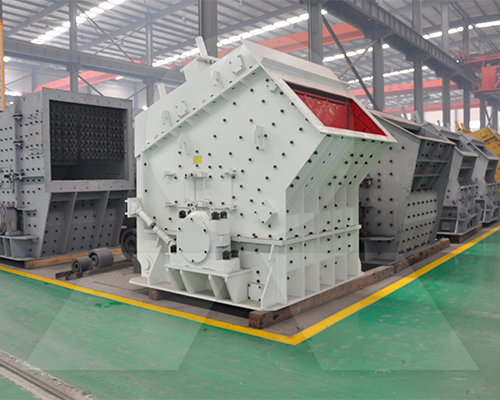Common Issues in the Operation of Impact Crushers and Their Solutions
Impact crushers, widely used in industries like mining, construction, and recycling, are known for their efficiency in crushing various materials, particularly medium-hard stones like limestone, granite, and concrete. However, despite their benefits, the operation of impact crushers can sometimes face challenges that affect performance and output. In this article, we will discuss some of the common issues encountered during the use of impact crushers and explore practical solutions to overcome them.
1. Uneven Material Feed
One of the most frequent issues with impact crushers is an uneven material feed. When the feed is not distributed uniformly across the crusher’s inlet, certain areas of the rotor receive more impact than others, leading to uneven wear. This not only reduces the lifespan of the rotor and blow bars but can also lead to suboptimal crushing performance.
Solution:
To prevent uneven feeding, operators should ensure that the material is evenly distributed by using a reliable feeder system. Regular inspections and adjustments to the feeder can help maintain consistency in material flow.
2. Excessive Wear of Blow Bars
Blow bars are critical components in impact crushers, as they are responsible for striking the material and breaking it down. However, these bars are subject to heavy wear, especially when dealing with abrasive materials. Premature wear of blow bars leads to decreased crushing efficiency and frequent downtime for maintenance.
Solution:
Blow bar wear can be minimized by selecting materials that are more resistant to abrasion, such as high-quality steel or other wear-resistant alloys. Additionally, operators should regularly rotate and replace blow bars to ensure that wear is evenly distributed across all bars, maximizing their service life.
3. Overheating of Bearings
Bearings in impact crushers play a crucial role in ensuring smooth rotation of the rotor. However, overheating is a common issue that can occur due to several factors, including poor lubrication, excessive load, or contamination by dust and debris. Overheated bearings can lead to equipment failure and costly repairs.
Solution:
Proper lubrication and regular maintenance are key to preventing bearing issues. It’s essential to use the right type of lubricant and ensure that it’s applied regularly to keep the bearings in optimal condition. Additionally, operators should install dust seals to prevent contamination and monitor bearing temperatures to catch potential problems early.
4. Clogging of the Crusher
Impact crushers are sometimes prone to clogging, especially when processing materials with a high moisture content. When material builds up inside the crushing chamber, it can reduce the crusher’s efficiency and may even cause damage to the machine.
Solution:
To minimize clogging, it’s important to ensure that the material being fed into the crusher is appropriately sized and contains a manageable moisture level. Using a pre-screening system can help remove fine or moist materials before they enter the crusher. Also, adjusting the crusher’s discharge settings and maintaining a clean crushing chamber can help prevent clogs.
5. Vibration and Noise
Excessive vibration and noise during the operation of an impact crusher are warning signs that something may be wrong. These issues can be caused by misalignment of components, imbalance in the rotor, or improper installation of wear parts. Ignoring such symptoms can lead to equipment failure or pose safety hazards.
Solution:
Regular inspections should be conducted to ensure that all components are aligned properly and securely fastened. Imbalances in the rotor should be addressed by balancing the rotor assembly and replacing worn or damaged parts. Installing vibration dampeners and soundproofing measures can also help reduce noise levels.
6. Reduced Output Capacity
As impact crushers operate over time, their output capacity may decrease due to wear and tear of key components, improper maintenance, or issues with the material being processed. Reduced output can affect overall productivity and increase operational costs.
Solution:
Regular maintenance is crucial to maintaining the efficiency of the crusher. This includes checking the rotor speed, inspecting blow bars, adjusting the gap settings, and ensuring proper feeding. Monitoring these factors can help maintain the crusher’s optimal performance and prevent declines in output.
Conclusion
While impact crushers are highly efficient in many crushing applications, operators should be aware of the potential challenges that may arise during operation. By addressing common issues such as uneven feed, blow bar wear, bearing overheating, clogging, vibration, and reduced output capacity, operators can extend the life of the equipment and maintain high productivity levels. Regular maintenance, proper material handling, and the use of quality components are key factors in ensuring the smooth and efficient operation of impact crushers.
- > High-Efficiency Mobile Crushing and Screening Equipment: A 500 TPH Solution for Australia
- > Efficient GZG Series Vibrating Feeder for Metallurgy: A Key Component in Modern Industrial Processes
- > Optimization of Secondary Cone Crushing Process in Peruvian Copper Mines
- > Impact Crushers for Crushing and Screening Granite and Iron Ore
- > Mobile Crushers for Dolomite Crushing
- > Cone Crusher in Metal Ore Beneficiation Production Line
- > Vibrating Jaw Crusher: A Powerful Solution for Russia’s Mining Industry
- > The Essential Role of Ball Mills in Ore Mining
Hot Product


Online




Message

